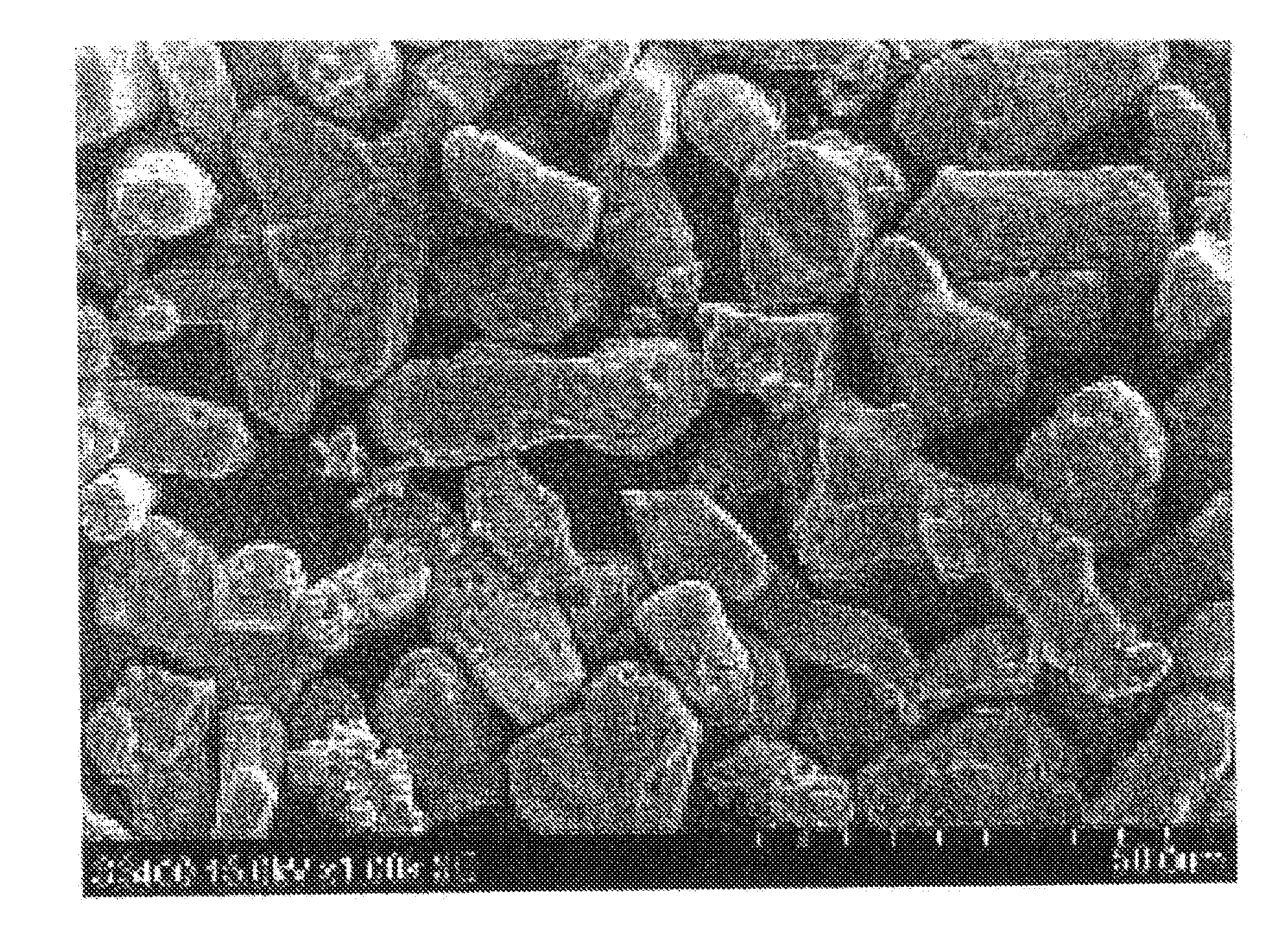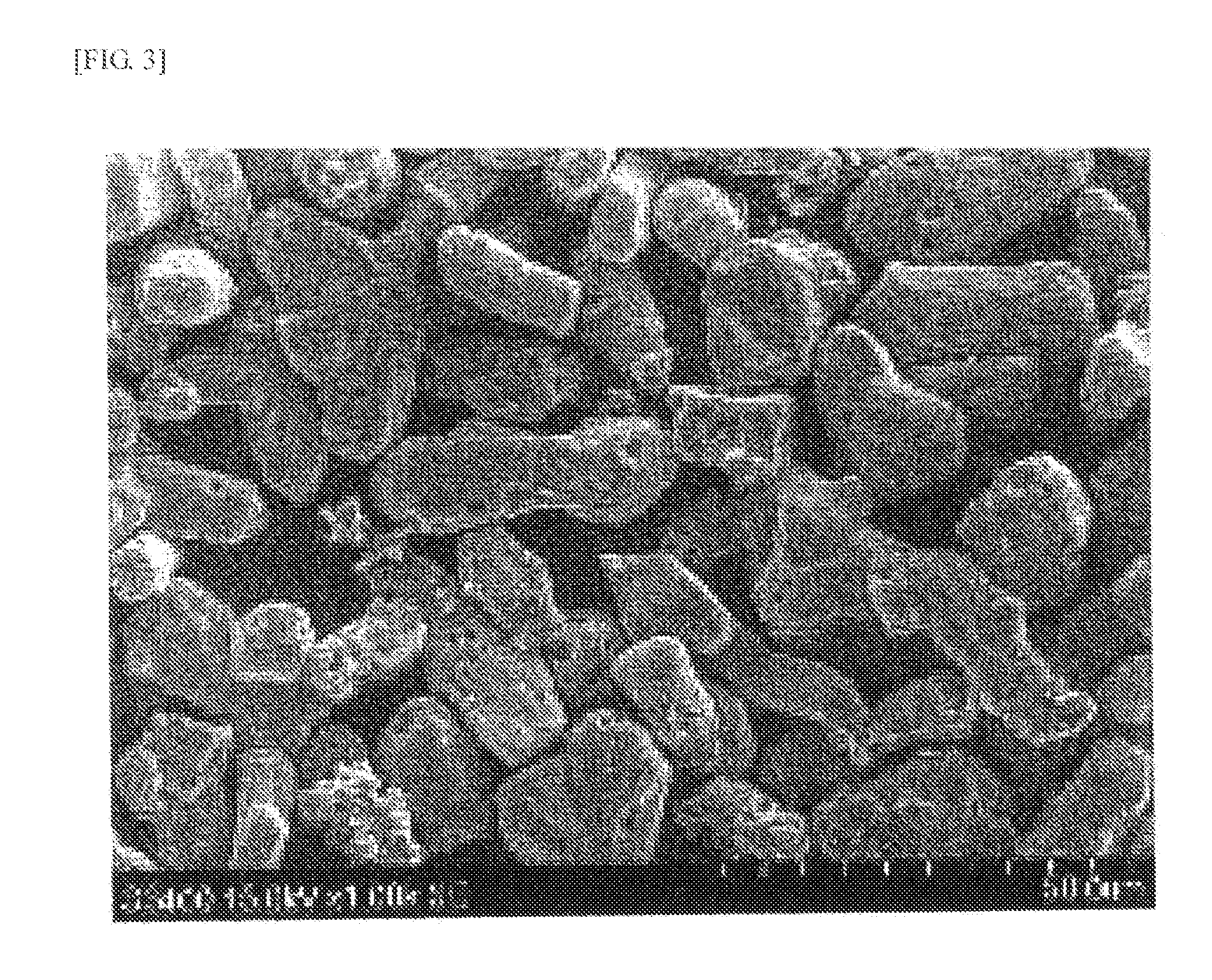Nitride phosphor and method for producing the same
- Summary
- Abstract
- Description
- Claims
- Application Information
AI Technical Summary
Benefits of technology
Problems solved by technology
Method used
Image
Examples
example 1
[0185]Source materials were prepared in a nitrogen-filled glove box, using LaN, Si3N4 (Ube Industries SN-E10), and CeF3 (Pure Chemical Co., Ltd.) in the starting composition ratio shown in Table 1. Specifically, LaN (17.67 g), Si3N4 (10.81 g), and CeF3 (1.52 g) were weighed, and thoroughly mixed on an alumina mortar. An about 3-g portion from the mixture was then charged into a molybdenum crucible.
[0186]For first sintering, the crucible was placed in a resistance heating electric furnace equipped with a temperature adjuster, and heated in the atmospheric pressure under a stream of a mixed gas (96 volume % nitrogen, 4 volume % hydrogen) supplied at 2 liters / min. The rate of temperature increase was 5° C. / min from room temperature to 1200° C., and 1° C. / min from 1200° C. to 1250° C. The sample was maintained for 4 hours, and allowed to cool to room temperature.
[0187]The sample was then transferred to the nitrogen-filled glove box, and sieved into sizes of 100 μm or less. The total amo...
example 2
[0189]A phosphor synthesis was performed in the same manner as in Example 1, except that the retention temperature for first sintering was changed from 1250° C. to 1300° C. The result of the characteristic evaluation of the phosphor is presented in Table 2. FIG. 1 shows the emission spectrum, FIG. 2 shows the reflection spectrum (A), and FIG. 4 shows a SEM image. The emission peak intensity was 62 upon excitation at 455 nm. The evaluation also revealed that reflectance Ra was 92% at 770 nm wavelength.
example 3
[0193]A phosphor synthesis was performed in the same manner as in Example 1, except that GdF3 (Pure Chemical Co., Ltd.) was used in the starting composition ratio presented in Table 3. The result of the characteristic evaluation of the phosphor is presented in Table 4. FIG. 6 shows the emission spectrum, and FIG. 7 shows the reflection spectrum (A). The emission peak intensity was 54 upon excitation at 455 nm. The evaluation also revealed that reflectance Ra was 87% at 770 nm wavelength.
PUM
 Login to View More
Login to View More Abstract
Description
Claims
Application Information
 Login to View More
Login to View More - R&D
- Intellectual Property
- Life Sciences
- Materials
- Tech Scout
- Unparalleled Data Quality
- Higher Quality Content
- 60% Fewer Hallucinations
Browse by: Latest US Patents, China's latest patents, Technical Efficacy Thesaurus, Application Domain, Technology Topic, Popular Technical Reports.
© 2025 PatSnap. All rights reserved.Legal|Privacy policy|Modern Slavery Act Transparency Statement|Sitemap|About US| Contact US: help@patsnap.com



